Minimalist Meal Planning and Cooking Made Simple
Category: Lifestyle
Simplify Your Kitchen and Your Life with Minimalist Meal Planning
If you've landed here, you’re likely someone eager to reclaim time, reduce stress, and eat well without the chaos of overcomplicated meal routines. Maybe you’ve tried juggling endless recipes, overcrowded grocery lists, and hours spent in the kitchen, only to feel burnt out or overwhelmed. Whether you're a busy professional, a minimalist enthusiast, or someone just starting to simplify your life, this guide understands your desire for clarity and ease when it comes to meals. Minimalist meal planning isn’t about sacrificing nutrition or flavor; it’s about smartly choosing fewer ingredients and creating nourishing meals that boost your energy and free your mental space. Unlike generic meal planning guides, this post walks you through actionable, practical strategies designed to fit into a minimalist lifestyle — helping you avoid food waste, save money, and cultivate calm around cooking. Read on to discover how to streamline your kitchen habits and transform the way you feed yourself and your family, one simple meal at a time.
- Simplify Your Kitchen and Your Life with Minimalist Meal Planning
- Understanding Minimalist Meal Planning: Core Principles and Benefits
- Assessing Your Current Habits and Kitchen Inventory
- Creating a Minimalist Meal Plan: Choosing Versatile, Simple Ingredients
- Batch Cooking and Meal Prep Strategies for Minimalism
- Easy, Minimalist Recipes That Require Few Ingredients
- Smart Grocery Shopping: Building a Minimalist Pantry
- Maximizing Leftovers and Minimizing Food Waste
- Adapting Minimalist Cooking to Dietary Preferences and Restrictions
- Using Tools and Technology to Simplify Meal Planning
- Building Sustainable Habits for Long-Term Minimalist Eating
Understanding Minimalist Meal Planning: Core Principles and Benefits
At its essence, minimalist meal planning is the art of simplifying your food preparation process by focusing on intentional choices that reduce complexity and elevate wellbeing. Instead of overwhelming yourself with countless recipes or lengthy shopping lists, minimalist meal planning embraces simplicity—selecting a limited number of versatile, wholesome ingredients that can be combined into a variety of nourishing meals. This approach not only streamlines grocery shopping and cooking but also helps to reduce decision fatigue, allowing you to spend less mental energy on daily meal choices and more on what truly matters.
The key principles of minimalist meal planning include:
- Prioritizing quality over quantity – Choose nutrient-dense, whole foods that deliver maximum health benefits with minimal fuss.
- Limiting repetitive ingredients – Use staple ingredients that can be repurposed across multiple meals, cutting down both waste and expense.
- Planning simple, balanced meals – Focus on meals that provide balanced nutrition without complicated steps or exotic components.
- Emphasizing ease and speed – Opt for recipes and prep methods that save time and reduce stress in the kitchen.
Adopting minimalist meal planning supports overall wellbeing by promoting mindful eating habits, improving digestion through natural foods, and freeing mental space otherwise consumed by meal-related decisions. It encourages a calmer kitchen environment, fosters financial savings by avoiding impulse buys and excess, and ultimately complements a minimalist lifestyle by turning mealtime from a burden into a peaceful, nourishing ritual.
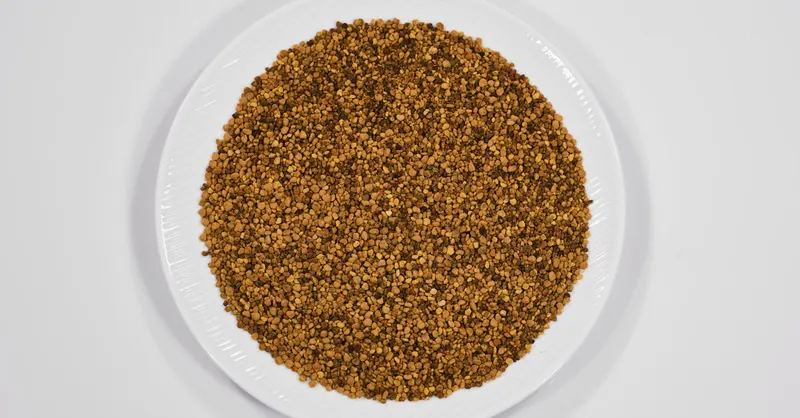
Image courtesy of Engin Akyurt
Assessing Your Current Habits and Kitchen Inventory
Before embracing minimalist meal planning, a critical first step is to evaluate your existing cooking routine, pantry, and fridge to identify clutter, expired items, and underutilized ingredients. This honest assessment helps uncover patterns of food waste, repetitive buying, and unnecessary kitchen complexity that can hinder your journey toward simplicity. Start by taking a comprehensive inventory of your kitchen staples, noting what you use regularly versus what tends to get forgotten or expires unused.
How to Evaluate Your Cooking Routine
Reflect on your typical week of meals. Ask yourself:
-
Which meals do I prepare most often, and why?
Identifying consistent favorites reveals your natural preferences and helps prioritize versatile ingredients. -
Are there recipes or cooking methods I avoid due to complexity or time constraints?
Recognizing these can guide you to simplify your meal options and focus on quicker, fuss-free dishes. -
How often do I resort to takeout or ready-made meals?
Understanding this frequency exposes gaps where minimalist meal planning can save both time and money.
Taking Stock of Your Pantry and Fridge
Conduct a methodical purge by:
- Expiring and removing food items that are outdated, unused, or duplicates.
- Grouping remaining items by category — grains, legumes, canned goods, fresh produce, proteins — to visualize what ingredients you truly rely on.
- Identifying staples that can serve multiple purposes versus single-use specialty items that clutter your space without adding value.
This inventory process not only declutters your kitchen but also lays the foundation for streamlined grocery shopping. With fewer, well-chosen ingredients on hand, you can build minimalist meal plans that reduce waste, simplify preparation, and enhance enjoyment in the kitchen. By aligning your cooking habits with a thoughtful kitchen inventory, you set yourself up for lasting success in adopting a minimalist meal planning lifestyle.

Image courtesy of RDNE Stock project
Creating a Minimalist Meal Plan: Choosing Versatile, Simple Ingredients
At the heart of minimalist meal planning is the strategic selection of versatile, nutrient-dense whole foods that simplify cooking without compromising nutrition or flavor. When building your minimalist grocery list, focus on ingredients that serve multiple purposes across various meals, reducing the need for specialized items and minimizing food waste. Prioritize staples that are easy to store, have longer shelf lives, and provide balanced macronutrients to keep your meals wholesome and satisfying.
Key Principles for Selecting Minimalist Ingredients
- Opt for nutrient-dense whole foods such as leafy greens, whole grains, legumes, and seasonal vegetables to maximize health benefits in every bite.
- Choose multi-use ingredients like quinoa, brown rice, canned beans, eggs, and frozen vegetables that can effortlessly transition from salads to soups, stir-fries, and baked dishes.
- Include a variety of protein sources—plant-based (lentils, chickpeas) and animal-based (chicken, fish)—to tailor meals to your preferences and ensure balanced nutrition.
- Incorporate healthy fats such as olive oil, avocados, and nuts, which enhance flavor and support satiety.
- Keep flavor enhancers minimal but effective, like garlic, onions, herbs, and spices, to create diverse dishes without complicating your pantry.
Building Your Minimalist Grocery List
Focus on a core set of ingredients that can be mixed and matched creatively:
| Category | Versatile Ingredients |
|---|---|
| Grains | Brown rice, quinoa, oats |
| Legumes | Lentils, chickpeas, black beans |
| Vegetables | Spinach, carrots, bell peppers, onions |
| Proteins | Eggs, canned tuna, chicken breast |
| Healthy Fats | Olive oil, avocado, almonds |
| Flavorings | Garlic, fresh herbs, dried spices |
By curating a minimalist pantry rooted in these multi-use, whole foods, meal planning becomes a seamless, enjoyable process. This approach not only reduces grocery expenses and food waste but fosters creativity within simplicity—empowering you to prepare quick, nutritious meals that align perfectly with a minimalist lifestyle. Embracing staple ingredients is a powerful step toward a kitchen that supports clarity, efficiency, and wellbeing at every meal.
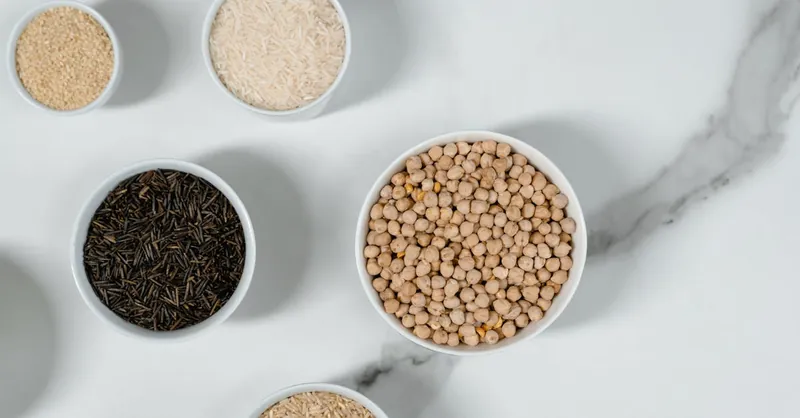
Image courtesy of MART PRODUCTION
Batch Cooking and Meal Prep Strategies for Minimalism
One of the most powerful ways to embrace minimalist meal planning is through batch cooking and streamlined meal prep. By preparing larger quantities of meals or ingredients at once, you drastically reduce the daily cooking workload, minimize cleanup, and wisely use your kitchen resources—achieving maximum efficiency with fewer pots, pans, and utensils. This approach not only saves valuable time and energy, but also supports consistent healthy eating habits with less decision-making and less stress throughout your week.
Tips for Efficient Batch Cooking with Minimal Cleanup
- Choose one-pot or sheet-pan meals: Opt for recipes that can be cooked entirely in a single pot, pan, or baking tray. This eliminates the need for multiple cooking vessels and simplifies cleaning.
- Cook versatile base ingredients in bulk: Prepare large batches of foundational components like grains (rice, quinoa), legumes (lentils, beans), or roasted vegetables. These can be mixed and matched with different sauces, proteins, and spices to create varied meals without extra cooking time.
- Plan batch-friendly proteins: Consider slow-cooker or oven-roasted proteins that can be cooked all at once and portioned for several meals. For example, roast a whole chicken or batch-cook lentils, then use leftovers creatively throughout the week.
- Use reusable containers that suit portion sizes: Invest in uniform storage containers that are stackable and microwave-safe to optimize fridge space and ease of reheating.
- Prep ingredients simultaneously: When chopping vegetables or preparing components, do so all at once rather than piecemeal. Group similar tasks—like washing greens or dicing onions—to accelerate the process and maintain kitchen flow.
Maximizing Time and Energy with Minimal Ingredients
Batch cooking for minimalism thrives on maximizing the utility of fewer ingredients. Instead of cooking new meals from scratch daily, transform your batch-prepared ingredients into diverse dishes by:
- Mixing grains and legumes with fresh or sautéed vegetables.
- Adding simple homemade dressings or spice blends to change flavor profiles.
- Cycling through a small rotation of sauces like tomato-based, tahini, or citrus vinaigrette to keep meals interesting.
By cooking once and eating multiple times, you reduce repetitive kitchen tasks and waste, freeing up more time to focus on other areas of your simplified lifestyle. This strategic approach honors the minimalist ethos—streamlining your cooking process while nourishing your body with wholesome, effortless meals.
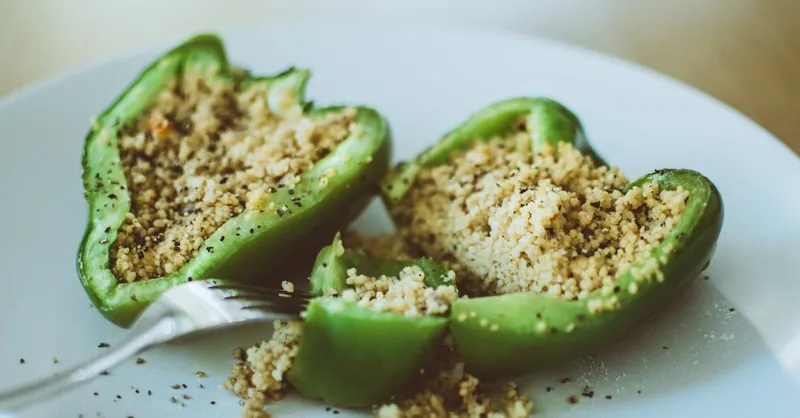
Image courtesy of Lisa from Pexels
Easy, Minimalist Recipes That Require Few Ingredients
Embracing minimalist meal planning means focusing on recipes that use a handful of simple, wholesome ingredients to create flavorful, nutritious dishes without complexity or excess. These meals are designed to be easily adaptable, allowing you to swap ingredients based on what’s on hand, seasonal produce, or your personal preferences, all while maintaining balance and taste. Prioritizing recipes that require minimal components not only streamlines your cooking process but also reduces grocery costs, cuts down food waste, and helps cultivate a calm, enjoyable environment in the kitchen.
Examples of Simple, Adaptable Minimalist Recipes
- One-Pan Roasted Chicken and Vegetables
- Ingredients: Chicken thighs, carrots, onions, olive oil, garlic, herbs
-
Why it works: Combines protein and veggies on a single tray, simplifying cleanup and maximizing flavor from minimal seasoning.
-
Lentil and Spinach Curry
- Ingredients: Red lentils, fresh spinach, onion, garlic, canned tomatoes, curry powder
-
Why it works: Uses pantry staples and fresh greens to create a hearty, protein-rich meal that can be paired with rice or eaten alone.
-
Quinoa Salad with Chickpeas and Avocado
- Ingredients: Cooked quinoa, canned chickpeas, avocado, lemon juice, olive oil, fresh herbs
-
Why it works: No cooking required beyond quinoa preparation; fresh, nutrient-dense, and perfect for batch prepping.
-
Scrambled Eggs with Sautéed Vegetables
- Ingredients: Eggs, bell peppers, spinach, onion, olive oil, salt, and pepper
-
Why it works: Quick, high-protein dish using minimal ingredients, great for breakfast or light meals any time.
-
Oatmeal with Fruit and Nuts
- Ingredients: Rolled oats, fresh or frozen berries, nuts (almonds or walnuts), a drizzle of honey or maple syrup
- Why it works: Nutrient-packed breakfast or snack with minimal preparation, adaptable to seasonal fruit availability.
These recipes embody the minimalist philosophy by emphasizing fresh, whole foods and straightforward preparation methods. They enable you to enjoy a variety of tastes and textures while sticking to your minimalist meal planning goals. By mastering these easy dishes, you reduce reliance on processed foods and complicated cooking techniques, freeing up time and energy to live more intentionally and simply.
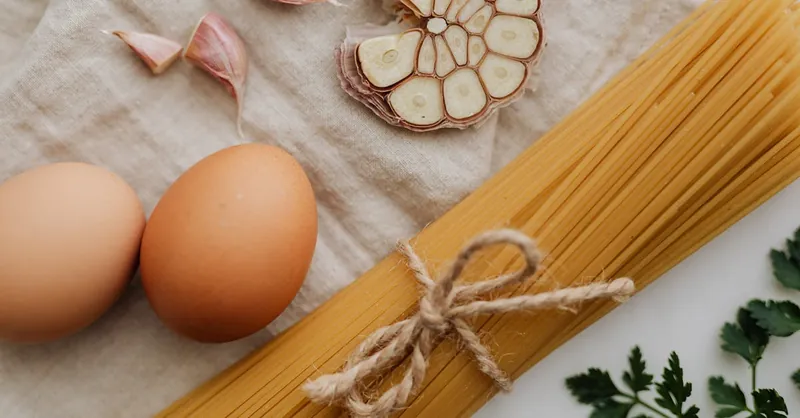
Image courtesy of Photo By: Kaboompics.com
Smart Grocery Shopping: Building a Minimalist Pantry
A cornerstone of successful minimalist meal planning is smart grocery shopping that cultivates a well-curated, functional pantry. Shopping consciously means resisting the allure of impulse buys, limiting excess, and focusing on quality over quantity—investing in ingredients that truly support your health, simplify cooking, and minimize waste. Developing a minimalist pantry is not about scarcity or deprivation; instead, it’s about intentional purchasing that aligns with your simplified lifestyle and culinary goals.
How to Shop Consciously and Avoid Impulse Buys
- Plan Before You Shop: Create a focused grocery list based on your minimalist meal plan. This list should prioritize versatile, staple items and avoid one-off specialty products that clutter your shelves.
- Stick to Your List: Discipline yourself to only buy what’s on your list. Avoid navigating aisles out of habit or boredom, and don’t shop when hungry or distracted—both triggers for impulse purchases.
- Choose Quality, Not Quantity: Opt for fewer, higher-quality ingredients like organic produce, whole grains, and sustainably sourced proteins that last longer, taste better, and provide superior nutrition. This reduces the frequency of purchasing replacements while enhancing your meals.
- Buy Seasonal and Local When Possible: This not only ensures freshness but often lowers prices and environmental impact, fitting perfectly into mindful, minimalist values.
- Embrace Bulk Buying for Staples: For pantry essentials like grains, legumes, and nuts, buying in bulk reduces packaging waste and saves money over time—just be sure to store them properly in airtight containers.
- Avoid Single-Use or Specialized Appliances: Smart shopping extends beyond food. Limit kitchen gadgets to essentials that serve multiple functions, which complements a minimalist pantry and lifestyle.
Elements of a Minimalist Pantry
A minimalist pantry is thoughtfully stocked with ingredients that work harmoniously across many meals, ensuring you never accumulate unnecessary items that expire or remain unused. Key pantry components include:
- Whole grains and legumes: Brown rice, quinoa, lentils, chickpeas
- Canned essentials: Tomatoes, beans, coconut milk
- Shelf-stable flavorings: Olive oil, vinegars, dried herbs, and spices
- Nuts and seeds: Almonds, chia seeds, pumpkin seeds
- Basic condiments: Mustard, soy sauce, natural nut butter
By building your pantry around quality staples and multipurpose ingredients, your grocery shopping becomes a streamlined, intentional process that supports easy meal preparation and reduces decision fatigue. This strategic approach not only saves money and minimizes waste but also ensures that your kitchen is stocked with meaningful options—making cooking an effortless, joyful part of your minimalist lifestyle.
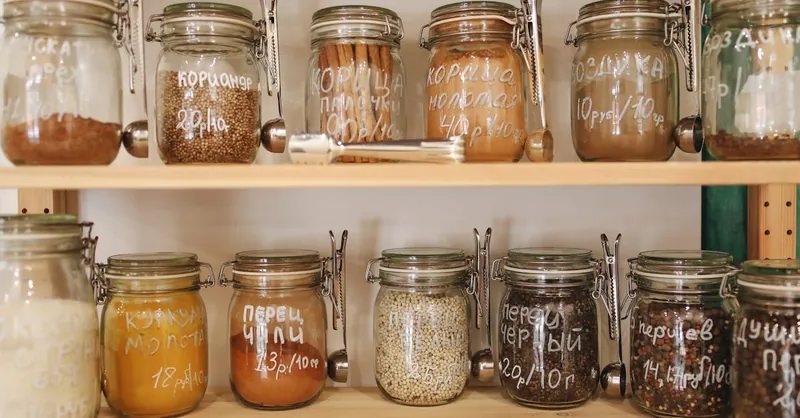
Image courtesy of Polina Tankilevitch
Maximizing Leftovers and Minimizing Food Waste
A crucial aspect of minimalist meal planning is learning how to maximize leftovers and drastically reduce food waste, saving both money and resources while simplifying your cooking routine. By intentionally repurposing meals and managing portions wisely, you ensure that every ingredient in your kitchen serves its fullest purpose without clutter or spoilage.
Practical Tips for Repurposing Meals
- Transform leftovers into new dishes: For example, roasted vegetables can be blended into soups or tossed into salads, while cooked grains and proteins can be combined into stir-fries or grain bowls. This not only creates variety but prevents repeated monotony in meals.
- Use versatile ingredients: Staples like beans, rice, and roasted chicken lend themselves to multiple recipes. By cooking in bulk and creatively remixing leftovers, you limit extra cooking sessions and reduce unused food.
- Plan portion sizes realistically: Prepare meals in quantities suitable to your appetite and family size to avoid uneaten food. When larger batches are necessary, immediately portion leftovers into individual servings for easy storage and future meals.
Storage Strategies to Preserve Freshness
- Use airtight, stackable containers: Proper storage containers extend the life of leftovers and simplify fridge organization. Glass or BPA-free plastic containers that are microwave-safe make reheating hassle-free.
- Label and date containers: Keep track of when food was stored to prioritize consumption and prevent forgotten items.
- Freeze when appropriate: Many cooked dishes, especially soups, stews, and grains, freeze well and can be thawed for quick minimalist meals later — reducing last-minute takeout temptations and food spoilage.
Incorporating these leftover maximization and waste minimization strategies complements the minimalist philosophy by extending ingredient use, streamlining meal prep, and cultivating respect for food resources. With mindful portion control and smart storage, your kitchen stays clutter-free, your grocery budget stretches further, and your mealtime stress naturally diminishes—transforming cooking into a sustainable, simple, and enjoyable practice.
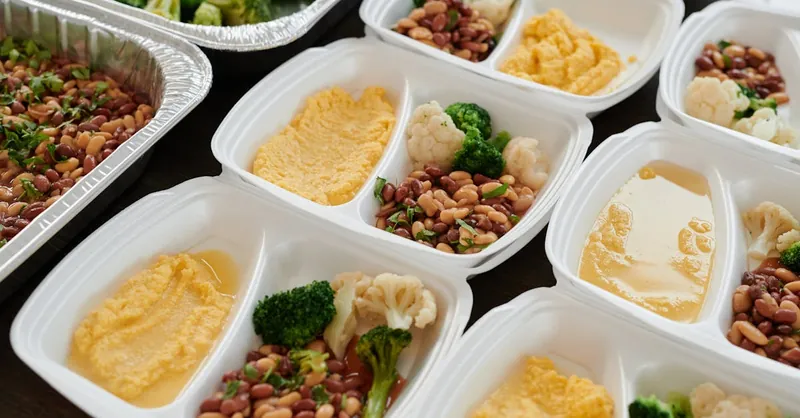
Image courtesy of Julia M Cameron
Adapting Minimalist Cooking to Dietary Preferences and Restrictions
Minimalist meal planning is inherently flexible, making it an excellent approach for tailoring meals to fit varied dietary preferences and restrictions—whether you follow a vegan lifestyle, need gluten-free options, or manage food allergies. The core principle remains the same: focus on simple, nutrient-dense, and versatile ingredients that can be combined in multiple ways to ensure both ease and enjoyment around mealtimes.
Customizing Minimalist Meals for Common Dietary Needs
-
Vegan and Plant-Based Diets
Emphasize plant proteins such as lentils, chickpeas, quinoa, and tofu, alongside a diverse range of fresh vegetables and healthy fats like avocado and nuts. Stock your pantry with vegan staples like canned beans, nutritional yeast, and whole grains to build flavorful, balanced meals without animal products. Select herbs and spices to enhance taste without relying on complex sauces or dairy. Many minimalist recipes can easily be adapted by substituting animal proteins with legumes or plant-based alternatives. -
Gluten-Free Options
Incorporate naturally gluten-free grains such as quinoa, brown rice, millet, and certified gluten-free oats. Avoid processed foods that may contain hidden gluten, instead prioritizing whole, unprocessed ingredients that simplify ingredient lists and ensure safety. Batch-cooked beans, fresh vegetables, and gluten-free flours (like chickpea or rice flour) can be used for baking or thickening sauces, maintaining simplicity while accommodating dietary needs. -
Food Allergies and Intolerances
When managing allergies to nuts, dairy, or eggs, minimalist cooking thrives by focusing on clean, whole foods that inherently avoid allergens. Emphasize whole grains, legumes, fresh produce, and safe protein sources such as fish or poultry if applicable. Use seed-based alternatives (like sunflower seed butter) or plant-based milks to replace allergens. Keeping ingredient lists short and straightforward reduces the chance of accidental exposure and streamlines shopping and cooking.
Strategies for Effectively Tailoring Minimalist Meals
- Build Your Meal Plan Around Core Safe Ingredients: Identify a small, reliable selection of ingredients that meet your dietary restrictions and are versatile enough for multiple dishes.
- Simplify Flavor Profiles with Herbs and Spices: Use fresh herbs, citrus, and easily digestible spices to add variety without complicating recipes or introducing allergens.
- Leverage Batch Cooking with Dietary Adaptations: Prepare allergy-friendly or restricted diet staples in bulk, ensuring convenient, ready-to-eat meals throughout the week.
- Adapt Recipes with Easy Substitutions: Replace common allergens or animal products with simple swaps such as flax eggs, cauliflower rice, or coconut yogurt to maintain minimalism without sacrificing nutrition or taste.
By thoughtfully adapting minimalist cooking to your unique dietary needs, you can enjoy stress-free, nourishing meals that honor your health goals and lifestyle while maintaining the core benefits of minimalism—simplicity, efficiency, and intentionality in every bite.
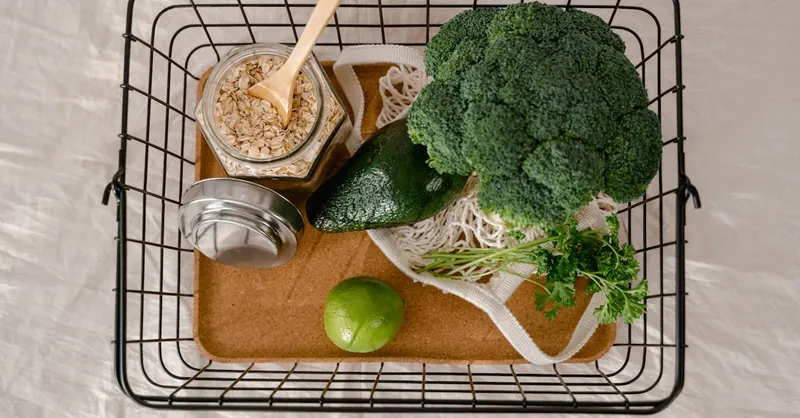
Image courtesy of Tima Miroshnichenko
Using Tools and Technology to Simplify Meal Planning
In the realm of minimalist meal planning, technology can be a powerful ally to streamline your cooking habits and reduce mental clutter. Utilizing dedicated meal planning apps, digital grocery lists, and online meal organizers helps you stay organized, avoid overbuying, and stick to your minimalist ingredient selections without the stress of paper lists or random grocery store impulse buys. These digital tools are designed to enhance efficiency by automating repetitive tasks, suggesting recipes based on your pantry staples, and enabling easy adjustments to your meal plan, all while supporting minimalist principles.
Top Benefits of Digital Tools for Minimalist Cooking
-
Automated Meal Planning and Recipe Suggestions
Many apps allow you to input your preferred staple ingredients and dietary restrictions, then generate simple, nutritious meal options tailored to your minimalist lifestyle. This eliminates the need to endlessly search for recipes or remember complex cooking steps. -
Effortless Grocery List Management
Digital grocery lists sync across devices and automatically categorize items, helping you shop intentionally and avoid overbuying. You can track pantry inventory in real-time, further reducing food waste by purchasing only what you need. -
Time-Saving and Reduced Decision Fatigue
By pre-planning meals using apps or digital planners, you free up mental energy throughout the week. Notifications and reminders ensure nothing important is overlooked, promoting consistency with minimal effort.
Recommended Apps and Tools for Minimalist Meal Planning
- Meal Planning Apps: Tools like Plan to Eat, Paprika, and Eat This Much specialize in creating streamlined meal plans based on your personal ingredient list and preferences.
- Digital Grocery Lists: Apps such as AnyList and Out of Milk enable you to build and organize your grocery list by categories, share lists with family members, and check off items as you shop.
- Pantry Inventory Trackers: Tools like Pantry Check help you monitor what’s currently available in your kitchen, enabling smarter meal prep and reducing redundant purchases.
Incorporating these technology-driven solutions into your minimalist meal planning routine amplifies simplicity and control over your food system. They transform what can be a cumbersome, time-consuming process into a seamless part of your minimalist lifestyle—empowering you to enjoy nutritious, effortless meals with less stress and greater clarity.
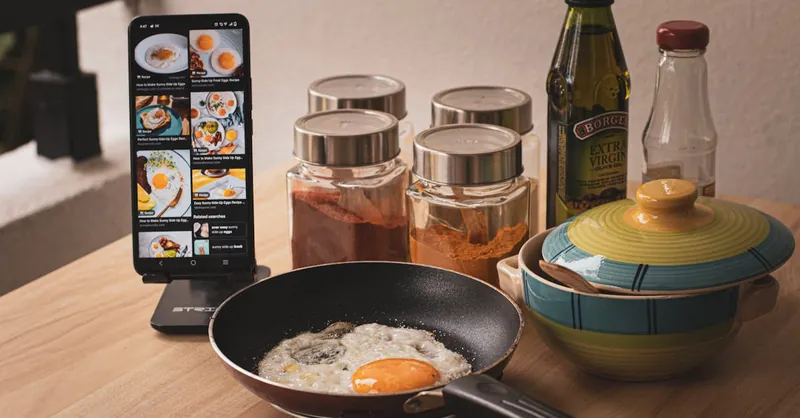
Image courtesy of Pranjall Kumar
Building Sustainable Habits for Long-Term Minimalist Eating
Maintaining a simplified kitchen lifestyle goes beyond one-time decluttering or meal planning; it requires cultivating mindful, sustainable habits that reinforce minimalist eating day after day. Long-term success hinges on consistency and ongoing reflection—regularly tuning into what works for your routine and making small adjustments that keep your kitchen and meals aligned with minimalism’s core values: simplicity, intentionality, and wellbeing.
Key Habits to Support Sustainable Minimalist Eating
-
Practice Mindful Meal Planning Weekly
Dedicate a short, regular time each week to plan your meals intentionally based on your current kitchen inventory and nutritional needs. This habit reduces impulse shopping, limits food waste, and keeps your grocery lists concise and focused on versatile, nourishing ingredients. -
Adopt Regular Kitchen Reviews
Periodically assess your pantry, fridge, and freezer to identify items that are underused or expired. Use these moments to adjust your staple ingredients list, purge clutter, and refine your meal plans. Frequent reflection helps prevent kitchen overwhelm and keeps your minimalist system efficient. -
Stay Flexible and Open to Adaptation
Minimalism in the kitchen isn’t about rigid rules but about ease and flow. Be willing to swap ingredients, try new simple recipes, and accommodate changes in seasonality or lifestyle. This adaptability ensures your minimalist meal planning remains enjoyable, prevents burnout, and nurtures a positive relationship with food. -
Mindfully Limit Food Purchases
Embrace the habit of buying only what fits your planned meals and avoid bulk buying items without a clear purpose. This restraint naturally minimizes clutter, reduces excess food, and aligns spending habits with minimalist values. -
Reflect on Eating Experiences and Energy Levels
Attune to how your simplified meals affect your physical energy, digestion, and mental clarity. Use these reflections to fine-tune portion sizes, ingredient choices, and meal timings, ensuring your minimalist eating supports your overall wellbeing sustainably.
By embedding these mindful habits into your lifestyle, minimalist meal planning becomes a natural, enduring practice rather than a temporary fix. This ongoing commitment to simplicity nurtures not only a decluttered kitchen but also a more peaceful, healthful, and intentional way of relating to food—supporting your broader journey towards minimalism and life clarity.
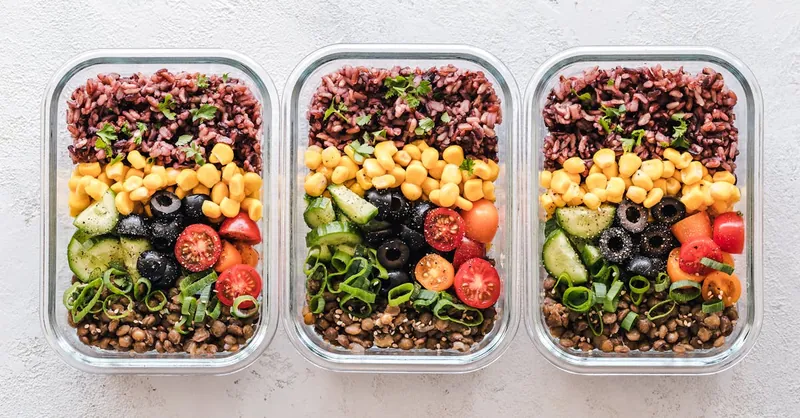
Image courtesy of Ella Olsson
